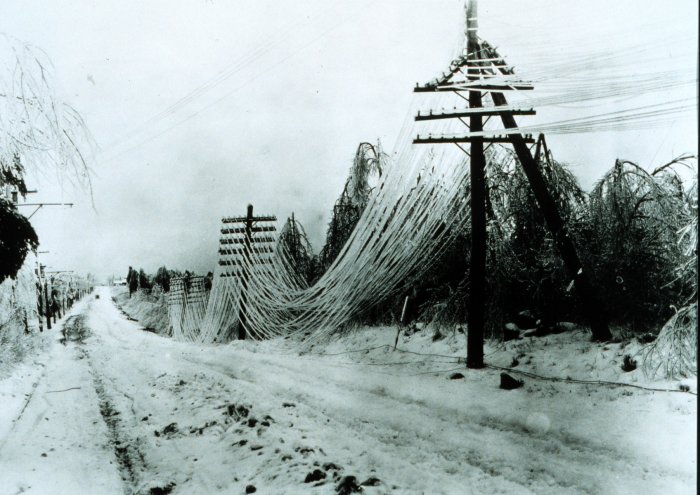“The weather was relentless.”
As 2014 proceeds, when a person makes a statement like that anywhere in North America, the reaction is usually an agreeing nod.
But that nod might mean something completely different depending on where you are.
In the Dakotas, Great Lakes, and New England, they might be thinking about record cold spells.
In the great Mid-West, it was rain, flooding, and freak late-winter thunderstorms.
Prolonged drought in Texas, Oklahoma, California and Nevada. The whole southwest, really.
But if you’re in Pennsylvania, Ohio, Ontario or Illinois—or New York, Maryland, Virginia or Delaware, what are you thinking? Relentless cold, snow, ice, freezing rain. In other words, a little bit of everything (except the drought part).
Atlanta? Forget about it!
And now, it’s summer, and we’re all driving around, commuting to work, going on vacation, wondering what the *~!# happened to our highways!

Ice Storm
Severe winter weather is a triple whammy that crumbles a lot of asphalt and concrete. And the way that we cope with that weather wreaks havoc with the budgets allocated to repair the damage and maintain the condition of the surfaces.
Here’s how it works: The last couple of years, we may not have invested enough in maintaining the infrastructure. Going into the winter season, many surfaces had cracks and pits that didn’t get filled or repaved before the snows. Winter came, and repeatedly snow, ice, and water filled the cracks, infiltrated, froze, thawed, contracted, expanded, and drove deeper into the substructure. Everything loosened up. Salt and scraping plow blades may have done their parts too. The roads are in ruins.
Some would assume that this means a booming—perhaps record breaking—asphalt paving industry this summer.
Not so fast. Early reports actually show nonbuilding (public works) construction contracts down 13% this year, compared to the same period in 2013.
Some areas seem to have found the funds to properly repair and maintain their highways after the devastation caused by recent severe weather. Governor Cuomo up in New York State recently announced major funding for road projects for this paving season, with the intention of preventing a vicious cycle of continuing and accelerating deterioration.
But many states reported spending double, even triple on salt and snow removal in the winter of 2014. They went way, way over budget for their annual highway expenditures, and have nothing left—less than nothing—for the summer/fall paving season.
So maybe there’s no funding left to fix these roads, no money. But there are still a lot of cracks, holes, and long washboard stretches where your tires rumble and your teeth rattle.
For those who don’t drive or don’t pay much attention to the day to day of the asphalt industry, the following numbers may be of interest. According to this article in TIME, a report was released that estimates that 27% of major urban roads need repair. That is a high enough percentage to cost drivers $80 billion per year. On top of that, the average driver eats $277 per year for repairs on their cars due to driving on pothole ridden roads.
If they’re not fixed, and we have another hard winter in 2015, this time next year we may be driving on rubble.
